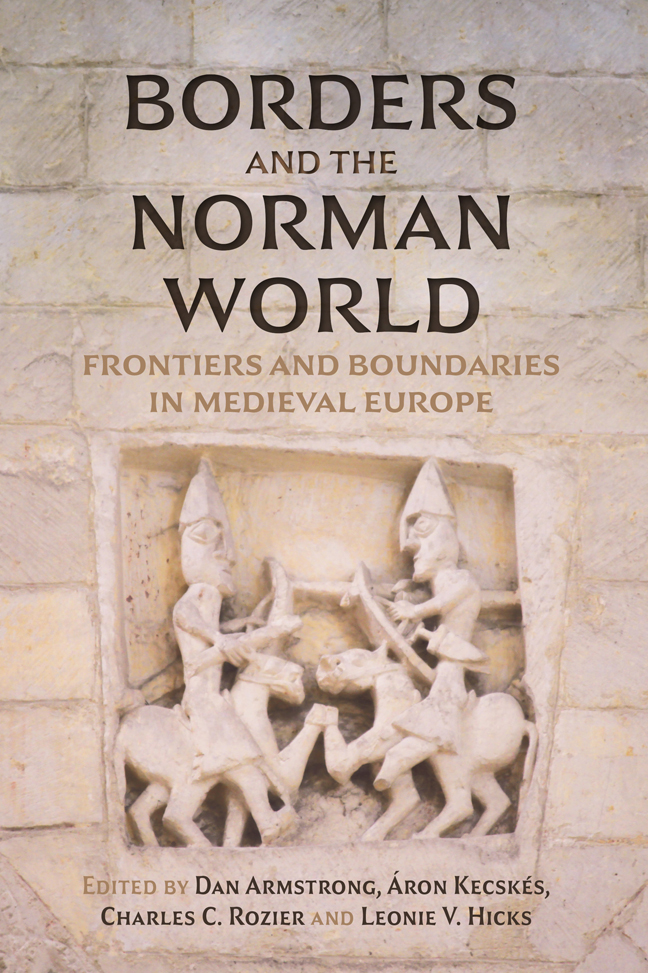Book contents
- Frontmatter
- Contents
- List of Illustrations
- List of Contributors
- Acknowledgements
- List of Abbreviations
- Naming Conventions
- Maps
- Introduction: Writing the Borders of the Norman World
- Part I Borders in and Around the Norman World
- Part II Ecclesiastical Borders
- Part III Conceptual Boundaries
- Afterword: Borders, Landscapes, and Seascapes
- Select Bibliography
- Index
4 - Boundary-making in the Beneventano in the Early Twelfth Century
Published online by Cambridge University Press: 22 February 2024
- Frontmatter
- Contents
- List of Illustrations
- List of Contributors
- Acknowledgements
- List of Abbreviations
- Naming Conventions
- Maps
- Introduction: Writing the Borders of the Norman World
- Part I Borders in and Around the Norman World
- Part II Ecclesiastical Borders
- Part III Conceptual Boundaries
- Afterword: Borders, Landscapes, and Seascapes
- Select Bibliography
- Index
Summary
Entirely Surrounded By Norman territorial lordships, the city of Benevento came under papal rule in the eleventh century. This chapter examines the ways in which Benevento was separated from its hinterland in the early twelfth century, exploring the crucial role the creation of boundaries played in situating Benevento in the new political order of the region. The Norman conquest of the eastern Campania did not cleave the region into neatly divided zones of control under Norman and Beneventan rule. Neither the Norman lords nor the citizens of Benevento intended to separate the city from its hinterland completely; the economic, cultural, and religious symbiosis between the two served the interests of all parties. Indeed, from an ecclesiastical perspective the city and the countryside remained united under the archdiocese of Benevento. At the same time, the emerging Norman territorial lordships, which claimed fiscal and judicial powers, partitioned the region between themselves. The severance of political ties between city and hinterland and the emergence of seigneurial jurisdictions in the latter created a novel situation for the Beneventans. The making of boundaries involving Benevento and the Norman lords of the hinterland was a central way of establishing the place of the city and its citizens in the new political order.
The principal source for any study of Benevento in the period is the Chronicon Beneventanum, an annalistic chronicle composed by Falco, one of the city's notaries and judges, over the course of the first half of the twelfth century. Although the beginning and the end of the work are missing in extant manuscripts, the chronicle nonetheless provides a detailed account of the history of the city of Benevento from 1102 to 1140. Falco's vehemently pro-papal work is complemented by a panegyrical history written for King Roger II by Alexander, abbot of San Salvatore Telesino, which focuses on Roger II's deeds in the eastern Campania and beyond from his birth to 1136. A third work, Romuald of Salerno's Chronicon sive Annales, written in the second half of the twelfth century, and a handful of items from the abundant Beneventan charter material complete the evidence drawn on in this chapter.
There existed no single border-line dividing the region into a Beneventan and a Norman zone. The limits of Beneventan and Norman seigneurial competence in economic, fiscal, political, and judicial matters were not located at a single physical line of division.
- Type
- Chapter
- Information
- Borders and the Norman WorldFrontiers and Boundaries in Medieval Europe, pp. 99 - 122Publisher: Boydell & BrewerPrint publication year: 2023

